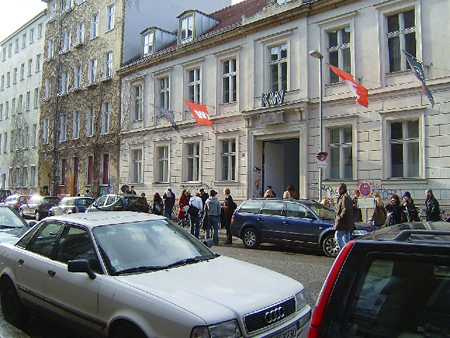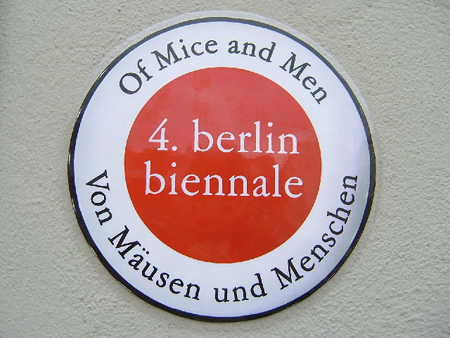THE 4TH BERLIN BIENNALE
HAPPENINGText: Yoshito Maeoka
The 4th Berlin Biennale has started. This time, it is held along the Auguststrasse, which used to be the main street for commercial galleries in Berlin. I am writing “used to be”, because the Berlin art scene has long moved out of the Mitte district and now only a few notable galleries remain here.
The Berlin Biennale properly began at the pre-event in the Gagosian Gallery Berlin in September 2005. The gallery has shown program exhibitions every month from then on.
Well known within the international art scene, this gallery is a branch of the best-known commercial gallery, the Gagosian in New York City. Why did such a famous gallery join the Berlin art scene so late? The three curators of the Biennale, Maurizio Cattelan, Massimiliano Gioni, and Ali Subotnick, must have planned this more or less as a joke.
Here is some information about the three curators. Maurizio Cattelan is a renowned artist. Massimiliano Gioni and Ali Subotnick are both curators and writers based in New York. The three own a gallery called “The Wrong Gallery” in New York, where they show the works of Biennale participants such as Paul McCarthy, Tomma Abts, Tino Sehgal, Martin Creed, and Pawel Althamer. The gallery has also exhibited the works of cutting-edge artists such as Sam Durant, Cameron Jamie, Jason Rhoades, Elizabeth Peyton, Paola Pivi, and Shirana Shahbazi.
This Biennale is entitled “Of Mice and Men“. This title originates from a poem by the 18th century Scottish writer Robert Burns and John Steinbeck later used it as the title for one of his plays. While the current trend in the international art scene tends to introduce new talent or movements in a striking manner, the Biennale focuses on the relationship between the past and the future. Thus it puts a spotlight on Berlin as a city that has gone through a history of victory and defeat.
During the Biennale, more than 60 artists are participating in different locations and times but unfortunately none of the artists are from Asia. Maybe it’s due to the interpretation of European culture that the basic themes of life such as birth and loss, death and surrender, grief and nostalgia do not really apply to Asian culture. In my opinion, this is inextricably linked to the tendency that Asians always represent an Asian point of view in their art.
Read more ...







